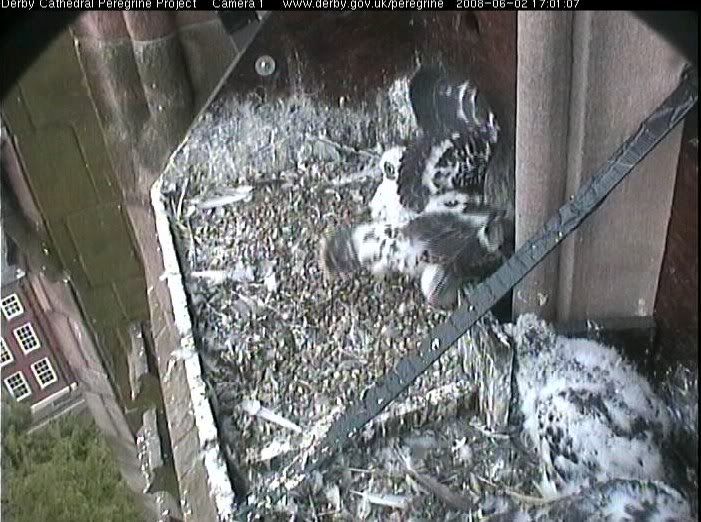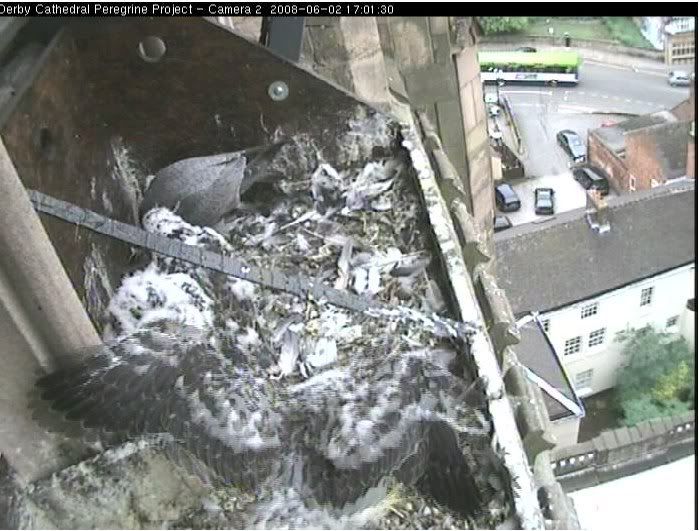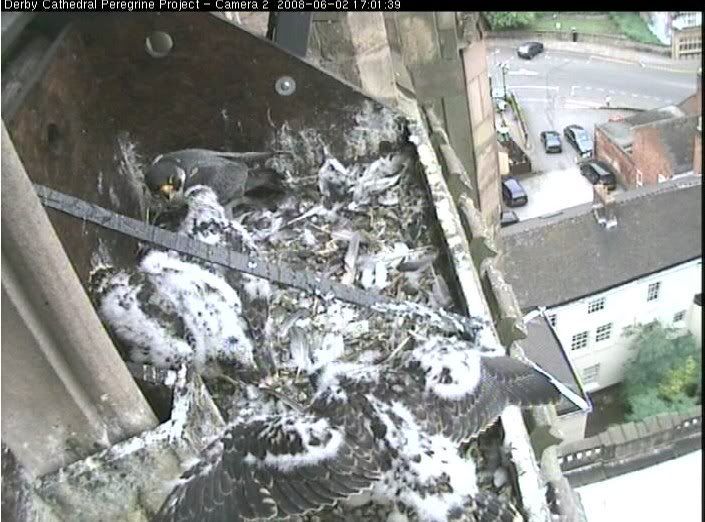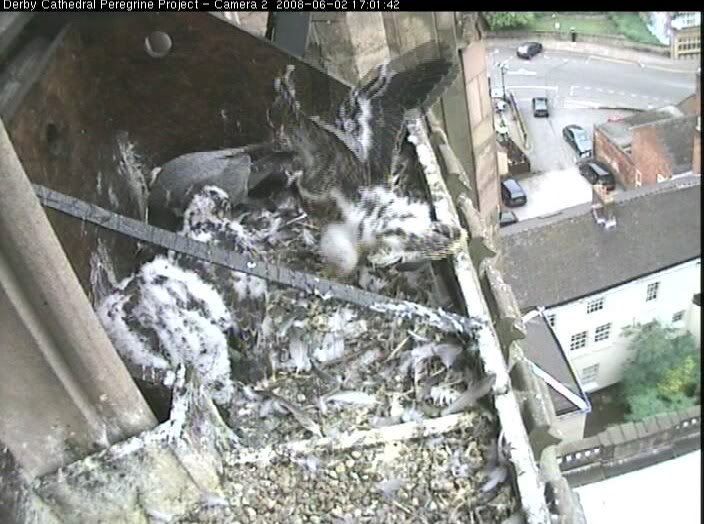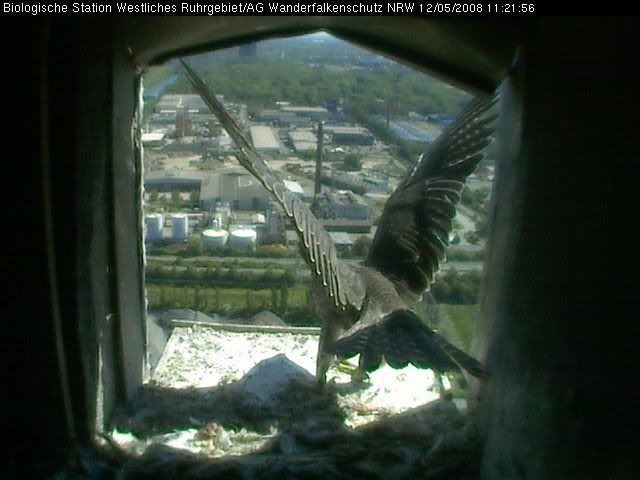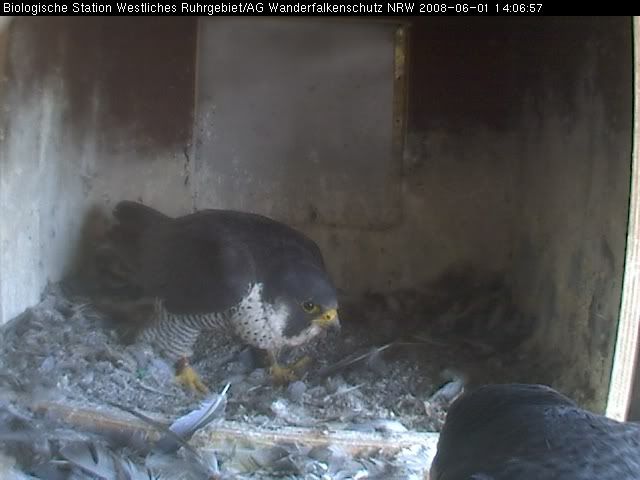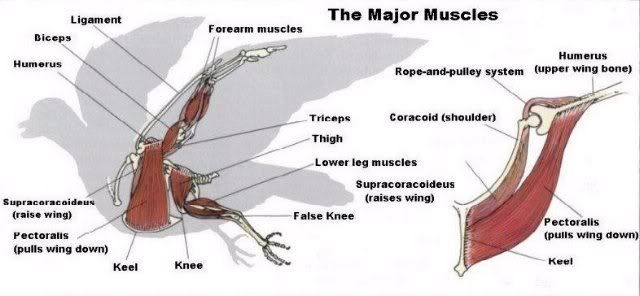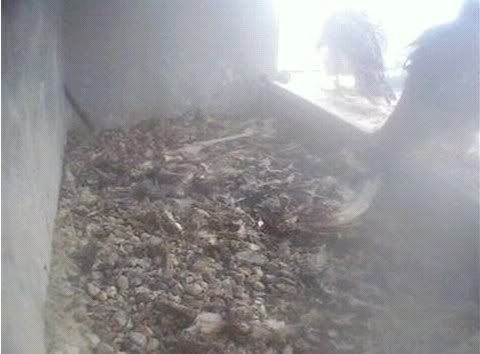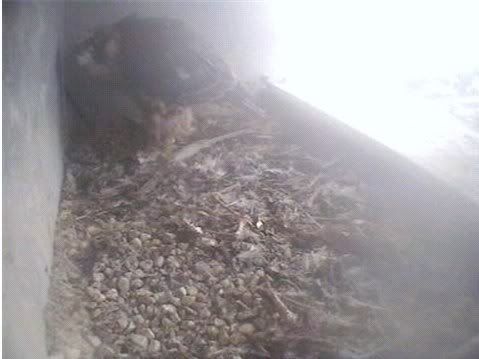Q. How much food does a peregrine eat in a day?A. A peregrine eats the equivalent of one quail-sized bird per day or more. We have documented the remains of more than 200 different species of prey in peregrine falcon nests in California. On a given day a peregrine falcon might eat most of a pigeon, or part of a duck, or two or more sparrow sized birds to meet its nutritional needs. The chicks eat considerably more than this daily as they quickly grow.
Q. Where do peregrines get their water?A. Peregrines get all the water they need for survival directly from the food they eat. However, they do like to drink water and bathe in it if it's available in a safe and secure location.
Q. Do Peregrine falcons have any predators?A. In non-urban settings great horned owls, golden eagles, and large mammals may prey on young falcons in the nest or at fledging. However, in urban areas Peregrines have relatively few predators. They will battle with any intruding peregrines.
Q. What do Peregrine falcons eat? How do they obtain food?A. Peregrines primarily eat birds they catch in the air. A peregrine will typically fly above its prey, then fold its wings and dive or "stoop" at the other bird and grab it or strike it in the air, then retrieving the stunned or dead bird in mid-air. Urban peregrines tend to eat a lot of pigeons, and this pair is no exception, but they eat a variety of the species available.
Q. Why do some eggs not hatch? Is this because of DDT, or a clumsy parent, or temperature related?A. Not all eggs are necessarily fertile, and some fertile eggs just don't hatch, much as some human pregnancies aren't carried to term. If any eggs remain intact when we band chicks, we'll collect them for pesticide analysis, and we'll be able to tell if they were fertile. "Urban" peregrines tend to be relatively "clean" of pesticides compared to those in "wilder" environments. This is probably because they eat more pigeons and starlings, which are lower on the food chain, so accumulate fewer pesticides than, say, wading birds that eat invertebrates in a marsh.
Q. If some of the eggs won’t hatch, why do the adults continue to incubate them?A. Eventually, they do stop incubating. When we used to remove thin-shelled eggs from wild nests for captive incubation, and replace them with artificial eggs, we knew we had to replace the latter with chicks at or near the "due date", or the adults would have abandoned the nest and not accepted the fostered chicks.
Q
. What happens after fledging? How long does it take for a youngster to learn to hunt successfully? Do both parents stay around for that process? A. It takes most young peregrines about six weeks to learn to hunt, and become independent. At first they are tentative, but within a few days, when a chick becomes more proficient at flying, the adults will begin passing food in the air, which will provide training in agility in addition to lunch. Normally there are siblings to "crab" with (play with in the air using talons and etc., honing flight skills), but if the nest only contained a single chick, it may turn most of its attention, as all young peregrines do, to easy targets such as dragonflies, or large birds to "tag", etc. Gradually they turn to more appropriate prey. The adults will continue to feed them as necessary until they have the skill to confidently feed themselves, at which point they will leave the territory and strike out on their own.














